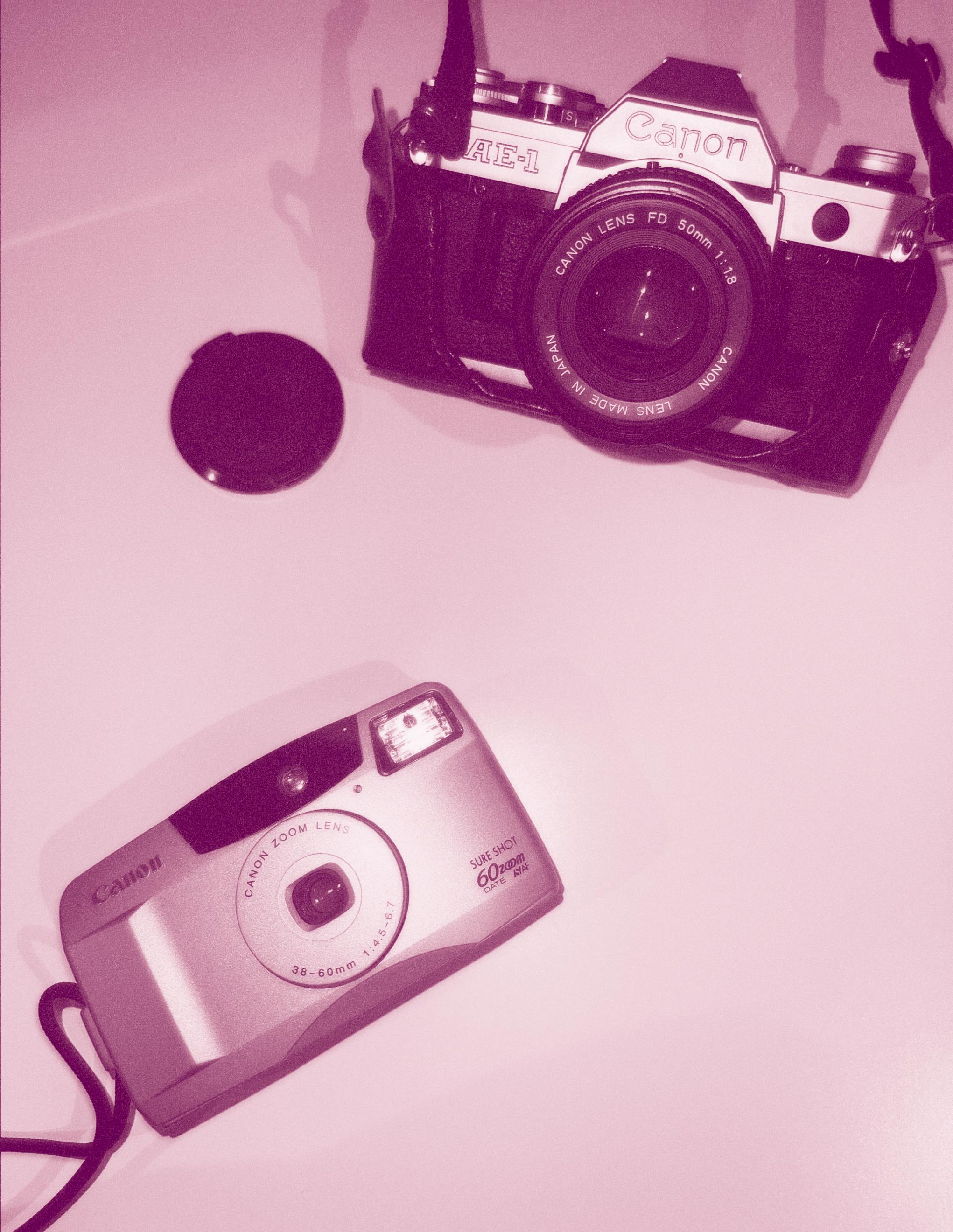
4 minute read
PICK YOUR STOCK
One of the first choices of many when it comes to 35 mm film photography is picking which roll of film to shoot on. With this type of film, the choices come down to how you want the images to look after developing.
The categories break down into black and white or color film and the ISO which determines the amount of light the film captures and how this is translated after shooting and getting the film developed. The first choice is choosing black and white or color film to shoot on. There are different stocks availabe in each so the decisions don’t end there. After deciding this, you have to figure out the amount of light you want the film to control depending on your shooting environment. I like to purchase 400 film because it is versatile enough to work in low light situations as well as bright, direct sunlight. If you’re shooting indoors let’s say during a concert, the higher the ISO the better at capturing the moments correctly. To be safe, I reccomend beginners to shoot with 400 film as it works beautifully in both situations and anything in between.
Advertisement
The next thing to figure out is what brand to shoot with. There are many brands out there selling film stock but my favorites are Portra and Kodak because they capture beautiful contrast and warmth as well as grain. Doing your research based on the overall style and feel you want your images to capture is the best way to decide. Different brands and types of film they carry have various amounts of grain, warmth, contrast, and other factors which can make or break an image in the eyes of a photographer. It is important to see film as a trial and error process that takes time to learn.
To break it down simply, 35 mm film can be shot on point and shoot cameras or SLR cameras. The difference is based on how much you want to control the image settings and how skilled you are with working with cameras. Point and shoot cameras are better to start off with because the camera is deciding all of the settings for you automatically besides your choice of ISO for the film you buy. SLR cameras are similar to DSLR cameras which allow you to change the settings of each individual shot to get a desired look.
You can find film cameras of all sorts online or in vintage or thrift stores. I personally found both my point and shoot camera as well as my SLR camera that way. It is so fun to think about who had the camera you are using before and how they shot film. The whole entire process of film is so rich in history that deciding on which camera to choose is just as powerful and important.
The choice to go with a point and shoot camera can be made to make the process go more smoothly or easier for a quick shooting experience. Most point and shoot cameras are easy to load. First you want to make sure there isn’t any old film inside of the camera. Most camera’s have a small button or lever used to rewind the film once every exposure has been shot. By pressing this, your camera will make a noise indicating the film is rewinding back into the canister. Once it is finished, you are safe to open the back of the camera where the stock of film will be back inside and ready to take out. To load film, start off with an empty camera and place the barrel of film into the opening. Carefully pull out enough of the film itself and tuck it down into the side of the end of the opening to where film is covering the entire back of the camera. By closing the back of the camera, it will automatically push the film inside and pprepare the camera for the first shot! To know that this worked, the display on the top of the camera should advance to 1 or 0 depending on the model!
The same sort of method works for SLR cameras except the body is a bit more delicate and intricate. You will most likely have a lever on the camers which will need to be manually spun to load and unload film. Once the inside is clear, you place the film barrel in and this time, hook the square opening in the film onto the inside lever to make sure it advances. With any type of film camera, you can tell that you loaded it correctly based on the noises it makes and the indicator on the top of the camera. With some SLR cameras, you must advance the film after each shot manually yourself. You can also change the settings that you shoot in.
Even after shooting film a few times, I still need reminding of how to load and unload cameras and making sure I am operating the camera itself correctly to make sure the images turn out in the end. After getting your film camera, I reccomend searching it up on social media and the internet to become more knowledgable about it and to learn from other people who have worked with the camera already. There are plenty of videos out there on specific film cameras that are helpful even after knowing the basics to film.
Picking out a camera and getting aquainted with it is the hardest aspect to film photography in my opinion. Every camera is slightly different or more sensitive to different things so it is important to be patient and work hard to understand the process. Learning from others and from practicing the craft is so important and can be very beneficial in film photography.




